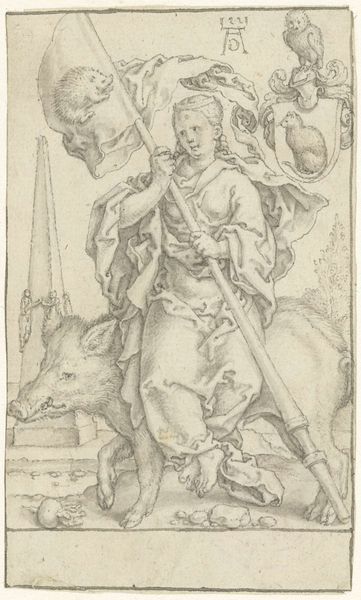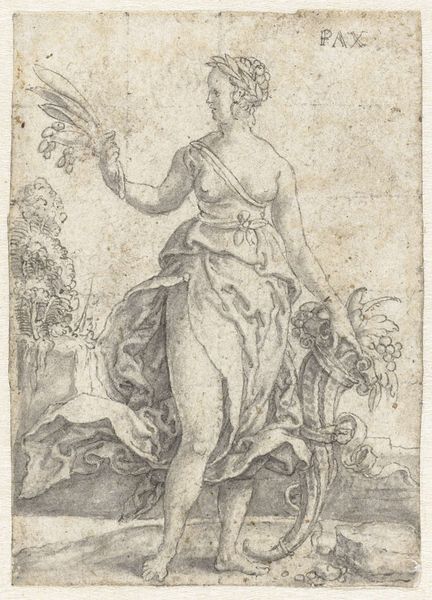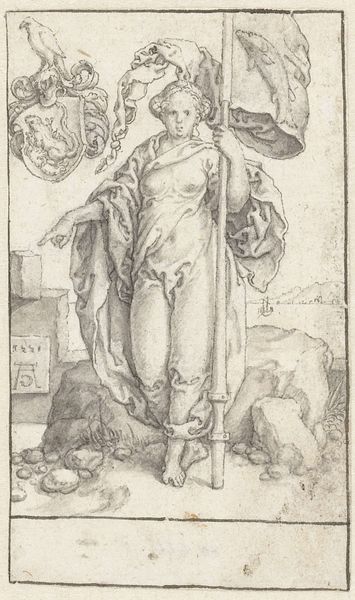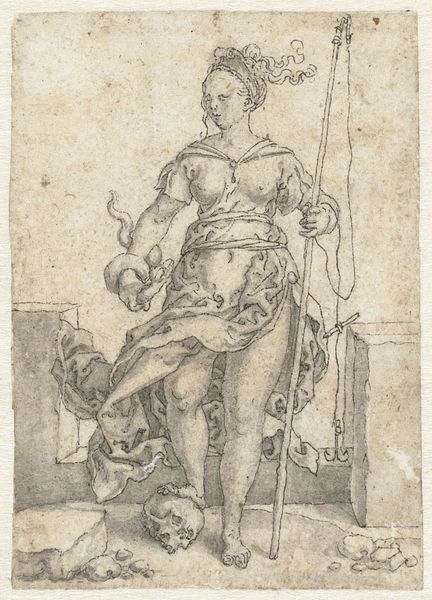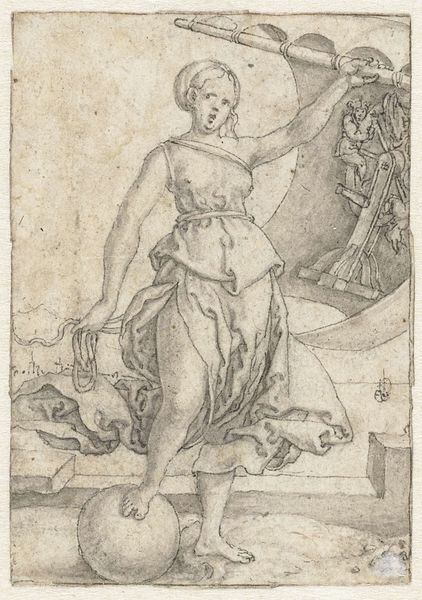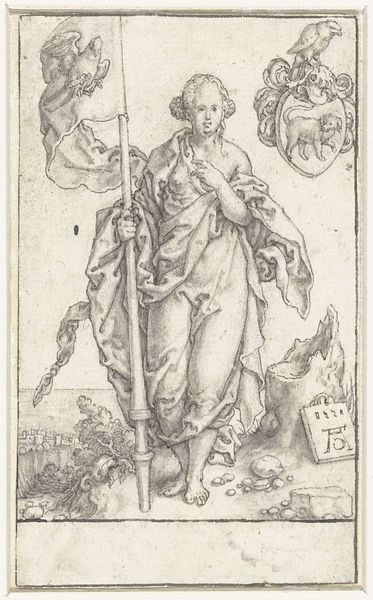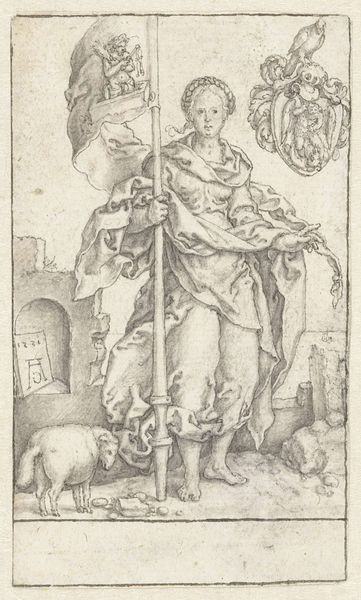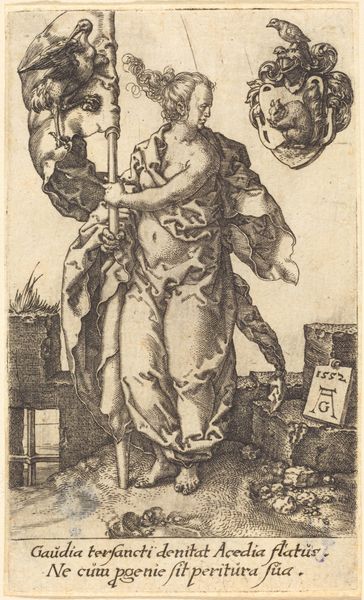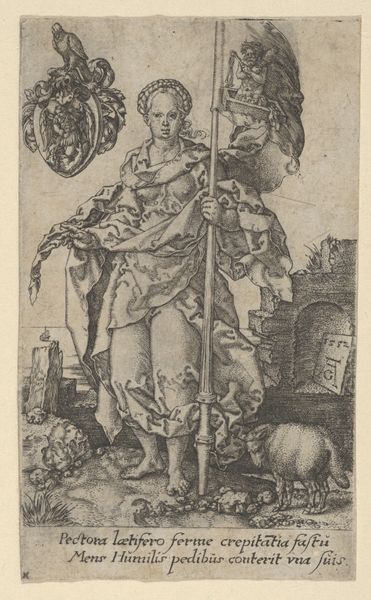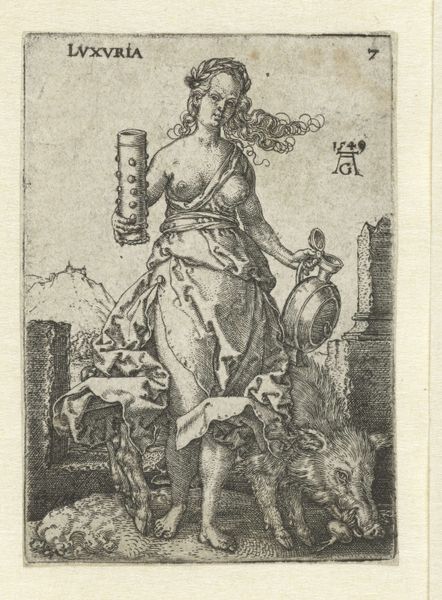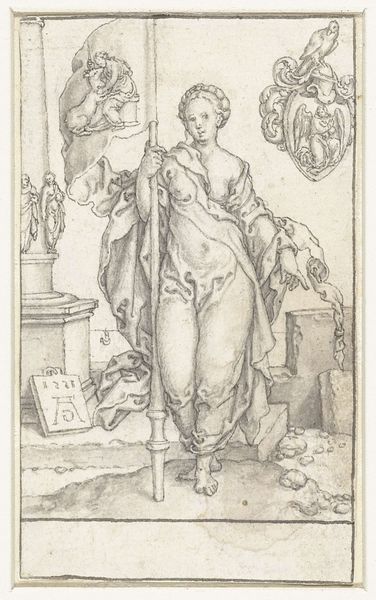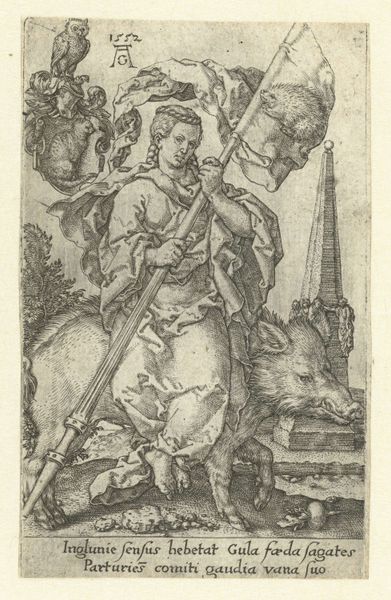
drawing, paper, pencil, pen
#
portrait
#
drawing
#
toned paper
#
light pencil work
#
quirky sketch
#
allegory
#
pen sketch
#
pencil sketch
#
mannerism
#
figuration
#
paper
#
personal sketchbook
#
pen-ink sketch
#
pencil
#
sketchbook drawing
#
pen
#
pencil work
#
history-painting
#
nude
#
sketchbook art
Dimensions: height 70 mm, width 50 mm
Copyright: Rijks Museum: Open Domain
Heinrich Aldegrever created this pen and brown ink drawing titled "Luxuria" sometime between 1520 and 1561, it now resides in the Rijksmuseum. During the early 16th century, as the Protestant Reformation gained momentum, artists grappled with how to represent moral concepts in a world undergoing religious upheaval. Here, Aldegrever embodies "Luxuria," or lust, with a figure who represents both allure and warning. The woman's revealing attire and confident gaze suggest a celebration of the sensual. Yet, she is accompanied by a boar, a symbol of uncontrolled appetite, and holds objects associated with vanity and excess. Aldegrever uses traditional allegorical representation which invites viewers to reflect on the complexities of desire and morality during a time when notions of sin and virtue were being fiercely debated. "Luxuria" speaks to the era’s intense negotiation between personal pleasure and public morality.
Comments
No comments
Be the first to comment and join the conversation on the ultimate creative platform.
